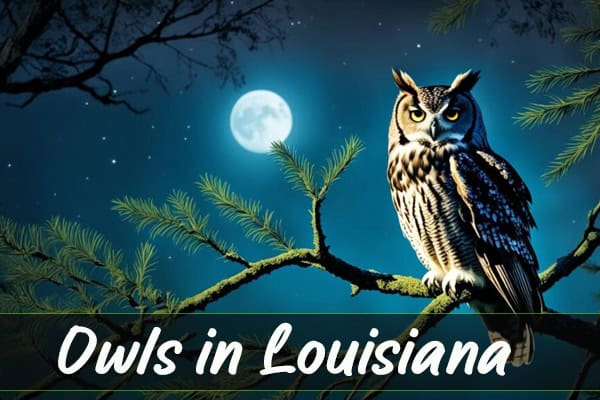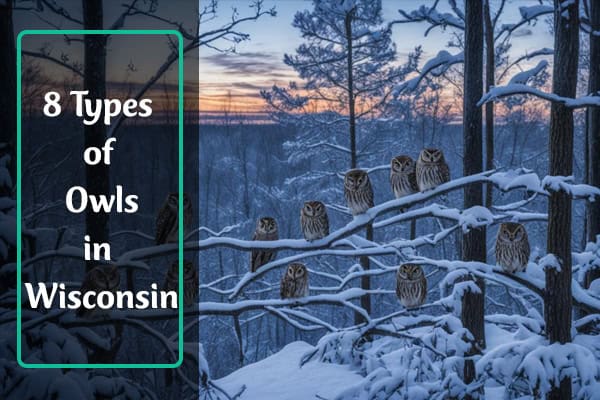8 Types Of Owls in Louisiana (With Pictures)
Have you ever seen owls in Louisiana? This state is full of owls, big and small. From the Great Horned Owl to the Burrowing Owl, each type plays a special role. They help keep nature balanced by controlling rodent numbers.
Some owls even fight against the Nutria, a harmful rodent from South America. We’ll show you the eight cool owl species in Louisiana. And we’ll tell you where to look for these amazing birds.
Owls in Louisiana
Some owl species live in Louisiana all year, and others visit just for winter. They’re crucial for keeping the state’s ecosystem in check. Eating rodents helps keep the natural balance in Louisiana’s various habitats.
1. Great Horned Owl
- Scientific name: Bubo virginianus
- Length: (46-63 cm)
- Weight: (910-2500 g)
- Wingspan: (101-145 cm)
- Lifespan: 10-20 years in the wild
Physical Characteristics
The Great Horned Owl is the biggest owl in Louisiana and all over North America. It’s known for its impressive size. It measures between 18.1 to 24.8 inches long. They weigh from 32.1 to 88.2 ounces and have a wingspan of 39.8 to 57.1 inches. These owls can be found in many places but mostly live in forests that have both deciduous and evergreen trees.

Habitat and Hunting Behavior
Great Horned Owls show excellent hunting skills. They catch small animals like mice and voles. But they can also go after larger prey such as jackrabbits and even young cats. Their ability to hunt during the day makes them easier to see. You might learn more about them by looking at the remains of what they eat.
2. Barn Owl
- Scientific name: Tyto alba
- Length: (32-40 cm)
- Weight: (400-700 g)
- Wingspan: (100-125 cm)
- Lifespan: 3-5 years in the wild
The Barn Owl is widespread, found across the globe. They usually live in barns and old buildings. In the US, they fly south in winter. But, in Louisiana, they stay all year. You can see them in fields near trees or thickets.

Nesting Habits
Unlike other owls, Barn Owls nest in human-made places. This includes barns and old buildings. Their choice of homes has helped them live all over the world.
Migratory Patterns
Barn Owls in the US fly south for warmth in winter. This migration is a mystery in part. Yet, it lets them live in many places, like Louisiana, all year long.
3. Burrowing Owl
- Scientific name: Athene cunicularia
- Length: (19-25 cm)
- Weight: (150 g)
- Wingspan: (55 cm)
- Lifespan: 6-8 years
The Burrowing Owl stands out from other owls. It doesn’t live in trees and flies less. Instead, it has powerful legs for fast running. This owl uses empty burrows of prairie dogs and gophers for homes. Their diet mainly consists of small insects.

Nesting and Hunting Adaptations
Burrowing Owls are well adapted to the grasslands. They catch their food by running on the ground. Unlike most owls, they don’t need trees for nests. They prefer old burrows for their homes.
Clever Defensive Strategies
Burrowing Owls have smart ways to stay safe. They make sounds in their burrows that sound like snakes. This keeps predators away. These owls are amazing in how they protect themselves. In Louisiana, they’re not in danger, standing strong in the ecosystem.
4. Eastern Screech-Owl
- Scientific name: Megascops asio
- Length: (16-25 cm)
- Weight: (121-244 g)
- Wingspan: (48-61 cm)
- Lifespan: 8-10 years in the wild
The Eastern Screech-Owl lives in Louisiana all year round. It’s tinier than the Burrowing Owl but has a big attitude. This owl is braver than most and loves suburban parks. Its diet includes small rodents which are common for owls.
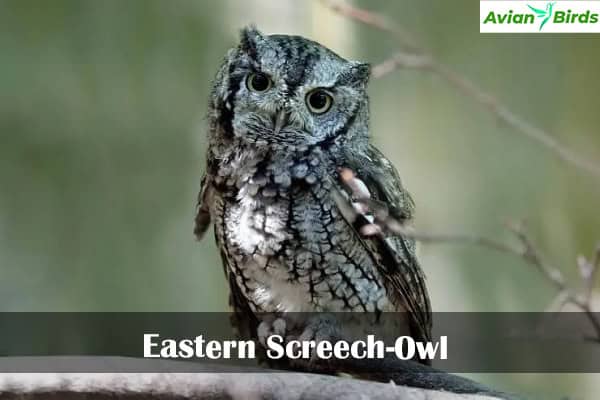
Color Morphs
There are two main color variations in the Eastern Screech-Owl. They are called the ‘red morph’ and ‘gray morph’, with the red being more common in the South. Despite being entirely nocturnal, you might hear them at night. Their unique call sounds like a trembling noise, not a screech like you’d expect.
Diverse Diet
The Eastern screech owl usually eats small rodents. But, it’s known to enjoy insects, birds, and even small reptiles and amphibians. Living in cities and suburbs, it finds lots of food. This makes them very adaptable and successful in these places.
5. Northern Saw-whet Owl
- Scientific name: Aegolius acadicus
- Length: (18-21 cm)
- Weight: (65-151 g)
- Wingspan: (42-48 cm)
- Lifespan: 5-7 years; in captivity
The Northern Saw-whet Owl might not be as usual in Louisiana as other owls, but they are there, hiding most of the time. Unlike many owls, they don’t eat prey in one gulp. Their name comes from the high-pitched sound they make like a saw blade being sharpened.
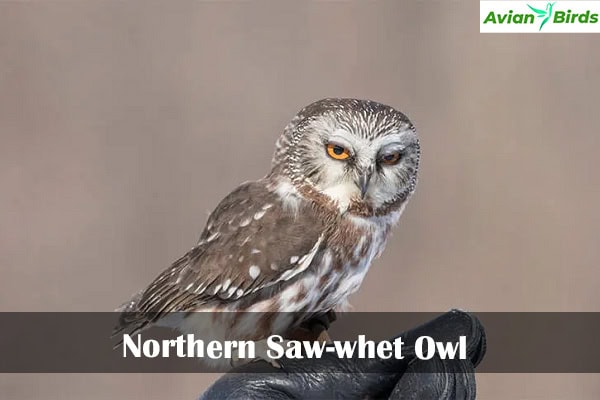
This owl looks a bit like a cat, with a face that has sharp lines. Young saw-whet owls stand out because their bellies are a unique cinnamon color.
6. Barred Owl
- Scientific name: Strix varia
- Length: (43-50 cm)
- Weight: (470-1050 g)
- Wingspan: (99-110 cm)
- Lifespan: On average, 8-10 years
The Barred Owl loves Louisiana for its old forests and swamps. These areas are its favorite homes. One distinctive thing about the Barred Owl is its call. It sounds like, “Who cooks for you? Who cooks for you all?”
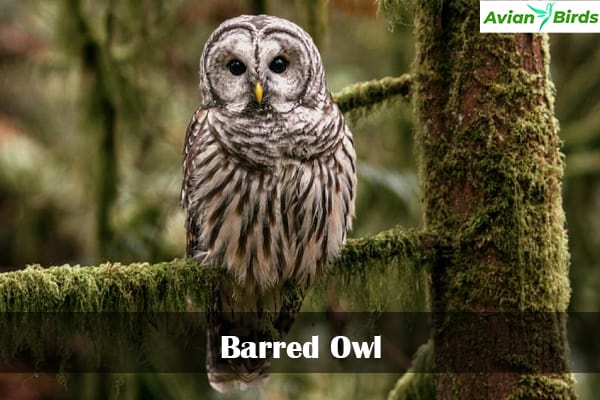
Distinctive Call
Although smaller than the Great Horned Owl, Barred Owls are still impressive. They are usually peaceful but might get bullied by tougher birds. Those living in the south are a bit smaller and darker.
Size Comparison
Barred Owls may have small feet, but they are amazing hunters. They can catch prey much bigger than themselves, like squirrels. Their diet includes small mammals, rodents, and even fish and crustaceans.
7. Long-Eared Owl
- Scientific name: Asio otus
- Length: (35-40 cm)
- Weight: (220-435 g)
- Wingspan: (90-100 cm)
- Lifespan: on average 10-15 years
The Long-Eared Owl stands out for how it likes to be with others, especially during winter. Instead of making their own homes, they use empty nests left by birds like crows or hawks. This way of living helps them save energy and keep warm in the cold months.
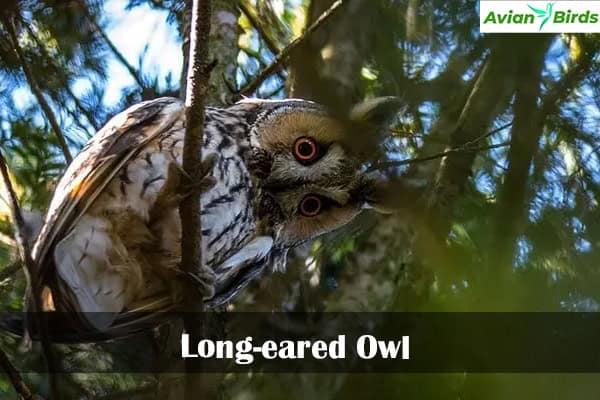
8. Short-Eared Owl
- Scientific name: Asio flammeus
- Length: (34-43 cm)
- Weight: (206-475 g)
- Wingspan: (85-103 cm)
- Lifespan: 4-15 years
The Short-Eared Owl is quite active during early mornings in Louisiana. You can often see it in fields and marshes. While it mainly eats voles, it might also go after larger prey, like gulls. This flexibility in its diet makes the Short-Eared Owl a skilled predator.

Spotting Owls in Louisiana’s Natural Habitats
Seeing owls in Louisiana is thrilling, but it takes effort. Birdwatchers with experience have it easier. But, if you want to see them, there are tips to help.
State Parks and Birding Trails
State parks and birding trails are great for owl-watching. Louisiana has many landscapes where owls live. They include swamps, marshes, forests, and fields.
Local Audubon Societies
Audubon societies have tours and tips for seeing owls. These groups know a lot about birding. They can help you understand Louisiana’s owl species.
Owl Conservation Efforts
Protecting Louisiana’s owls is vital, and everyone can help. A major threat is the use of rodenticides to control rats and mice. These chemicals can harm owls and other birds when they eat poisoned rodents. This can lead to the owls’ deaths.
Avoiding Rodenticides
To keep owls safe, avoid using rodenticides. Choose eco-friendly ways to deal with pests instead. Things like traps or using natural predators, such as barn cats, can help without hurting owls.
Providing Nesting Boxes
Supporting owl habitats can also be done by putting up nesting boxes. Owls need safe spots to raise their young. Place these boxes in spots with food and cover to help owls survive and grow in number.
These steps help in saving Louisiana’s owls. With safe pest control and the right habitats, we can see owls continue to fly over the state for years.
The Call of the Wild: Listening for Owl Vocalizations
Owls have unique sounds that help birdwatchers find them. For example, the Barred Owl asks, “Who cooks for you? Who cooks for you all?” The Eastern Screech-Owl sounds like a horse when it wins. By knowing these sounds, you’ll have a better chance of seeing them in the wild.
Owls are usually on their own, especially if not nesting, and they come out at night. This makes daytime owl sounds rare. Sometimes, people mistake Mourning Doves’ coo for owl calls. But, owls have specific and different sounds. You can hear these in owls like the Barred Owl, Eastern Screech-Owl, Western Screech-Owl, and Great Horned Owl.
MIT researchers found that playing owl sounds from mobile phones helps count owls better. They compared this to using CDs. The mobile phone method involved 65 phones and 250 volunteers. This new way lets scientists look at bird populations worldwide. Now they can gather more data faster, studying bird variety and behavior more effectively.
Learning owl sounds in Louisiana improves your owl-spotting skills. Knowing their sounds can also teach you about the state’s many ecosystems. The Barred Owl’s spooky call or the Eastern Screech-Owl’s trembling noises are worth listening for. It makes discovering the world of owls exciting and meaningful.
Dissecting Owl Pellets: Insights into Their Diet
Owls have a special way of eating that teaches us a lot about what they like to eat. They eat their food whole and later bring up what they can’t digest, like bones and fur, in hard pellets. By looking at these pellets closely, we can understand what kinds of animals owls in Louisiana often catch, from tiny mice to bigger animals. This habit shines a light on the owls’ diets.
When we find piles of owl pellets by their homes, it can tell us an owl family is sitting close by. This helps people see these amazing birds. It’s interesting to study these pellets. It’s not just for fun but also to help experts and fans appreciate how important owls are for the different habitats in Louisiana.
Check Our Previous Articles:
| Study | Findings |
|---|---|
| Analysis of nest-defense behavior of Red-tailed Hawks (Andersen, 1990) | Demonstrated the importance of nest defense in ensuring reproductive success for raptors. |
| Research on colonial breeding and nest defense in Montagu’s Harrier (Arroyo et al., 2001) | Revealed the strategies employed by Montagu’s Harriers to protect their nests from predators. |
| Study on the nesting ecology of Great Horned Owls in the Eastern Deciduous Forest Biome (Bosakowski et al., 1989) | Provided insights into the nesting habits and prey preferences of Great Horned Owls. |
| Factors affecting the reproductive success of merlins, including nest-defense behavior (Fox and Donald, 1980) | Highlighted the importance of nest defense in maintaining healthy merlin populations. |
| Food habits of Great Horned Owls during breeding seasons in Brazil (Tomazzoni et al., 2004) | Revealed the diverse prey items consumed by Great Horned Owls in their breeding habitats. |
Owls in Louisiana’s Urban Landscapes
Owls are known for living in places like forests and marshes. But, some owls in Louisiana have learned to live in cities and suburbs. The Eastern screech owl is one such species that does well in these new settings, making homes in parks and neighborhoods.
Learning about owls in cities and suburbs helps us see their strength and ability to change. It also lets us watch these cool birds up close. This is great for anyone who likes looking at birds and nature.
Exploring Louisiana’s owl variety makes us think about keeping their homes safe. We know they can live near us in cities if we keep some space for them. With our care, we can make sure owls, like the Eastern Screech-Owl, stay part of our lively state.
Wrapping Up…
Louisiana has a wide range of native owls that even new birdwatchers can enjoy. The state’s different habitats allow special species like the Burrowing Owl to live alongside common ones like the Great Horned Owl.
Owls are important for Louisiana’s ecosystem. They are interesting to learn about and play a key role in keeping rodent populations under control.
Learning about owls and their challenges helps protect these birds and raises awareness about the threats they face.

